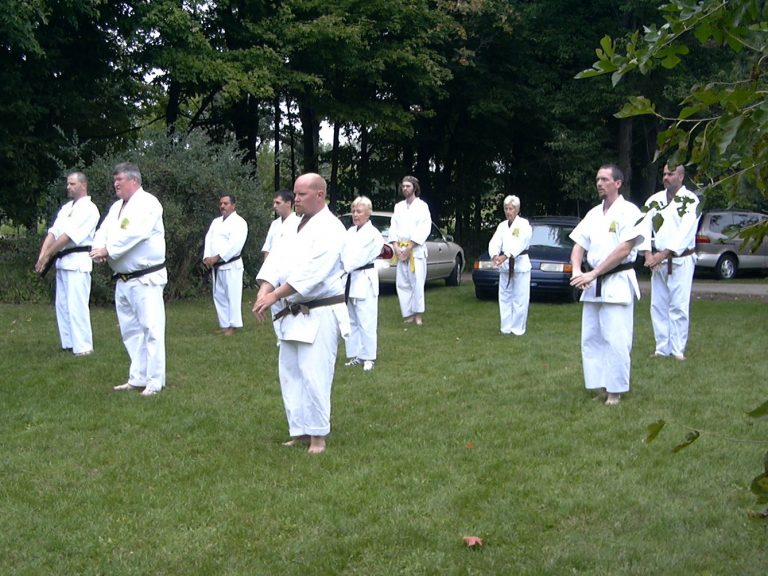The kyu ranking system is more a training tool than a reward. Instructors, other students, and visiting practitioners use it to quickly establish a baseline for what a student knows and how they can best help each other. Many dojos use different colored belts and stripes to signify the ten kyu ranks. Our dojo uses four belts only; white belt (10th and 9th kyu), yellow belt (8th and 7th kyu), green belt (6th, 5th and 4th kyu), and brown belt (3rd, 2nd and 1st kyu).
Tenure in the dojo is also recognized when students line up for class. Students may be the same rank but if one person has been training longer, they are seen as senior. This can change if the junior passes the senior in rank and it is a logical outcome if a student’s busy schedule does not permit them to make as many classes as others or if they put in less effort.
The appropriate time for testing is determined by the instructor and students should not ask to be tested. Readers may review the full rank criteria and testing prcedures for the Michigan Ryusyokai Karate Club HERE.


